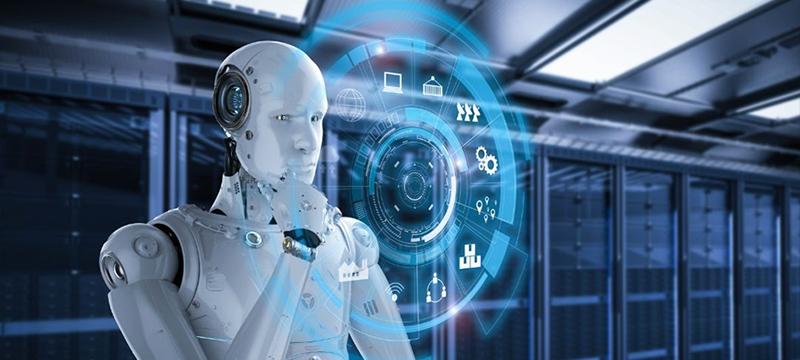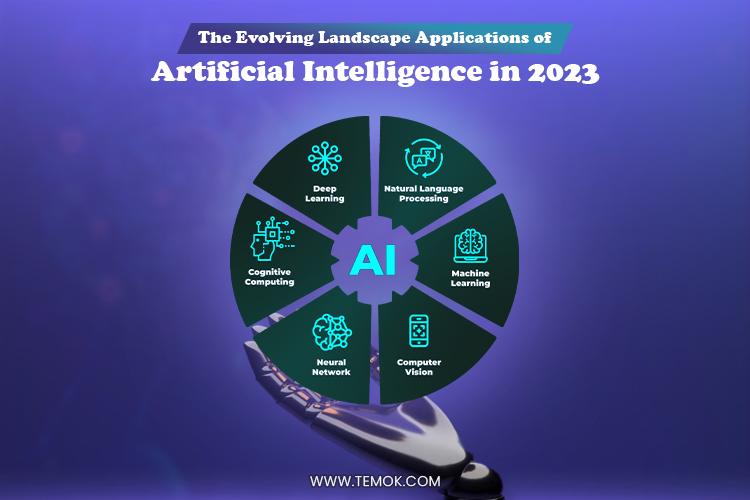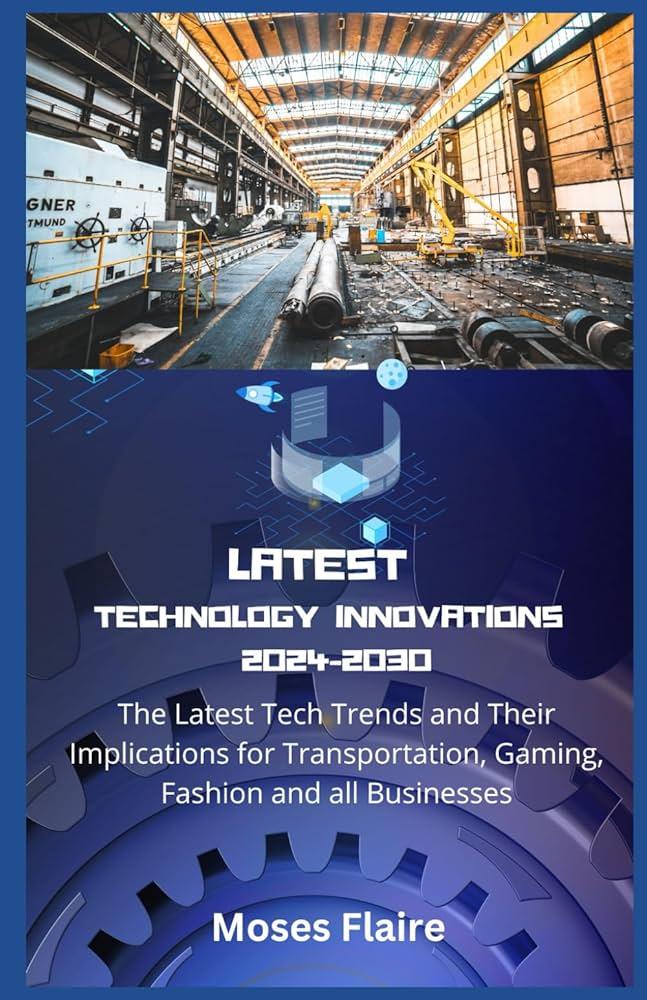Introduction
In an era defined by rapid advancement and digital transformation, the landscape of technology continues to evolve at an unprecedented pace. From groundbreaking breakthroughs in artificial intelligence to revolutionary strides in renewable energy, the innovations emerging in 2023 are set to shape the future in profound ways. This article explores the latest developments that are capturing the attention of industry leaders, policymakers, and consumers alike. As we delve into key innovations poised to make a significant impact, we will examine how these technologies are not only enhancing efficiency and connectivity but also addressing some of the world’s most pressing challenges. Stay tuned as we highlight the critical advancements to watch in the coming months and their potential implications for businesses and society.
Table of Contents
- Emerging Technologies Shaping the Future of Work
- Revolutionary Advancements in Artificial Intelligence Applications
- Sustainable Innovations Driving the Clean Energy Transition
- Transformative Trends in Consumer Electronics and Smart Devices
- Insights and Conclusions
Emerging Technologies Shaping the Future of Work

The future of work is being dramatically influenced by a range of emerging technologies that promise to reshape professional landscapes across industries. Among these advancements, artificial intelligence (AI) stands out as a transformative force. With capabilities ranging from advanced analytics to full automation of mundane tasks, AI is enabling companies to enhance productivity and focus on strategic initiatives. Other significant innovations include augmented reality (AR) and virtual reality (VR), which are revolutionizing training and collaboration by providing immersive experiences that traditional methods cannot match. These technologies not only engage employees but also streamline processes, reducing training costs and time.
In addition to AI and AR/VR, the rise of blockchain technology is also noteworthy, particularly in sectors such as finance, where it enhances security and transparency in transactions. Moreover, the increase in remote collaboration tools has reshaped workplace dynamics, making it easier for teams to collaborate from different locations seamlessly. Here’s a quick overview of some key innovations:
| Technology | Impact on Work |
|---|---|
| Artificial Intelligence | Automation of tasks and enhanced decision-making |
| Augmented Reality / Virtual Reality | Immersive training and improved remote collaboration |
| Blockchain | Increased security and transparency |
| Remote Collaboration Tools | Seamless teamwork across locations |
Revolutionary Advancements in Artificial Intelligence Applications

In the rapidly evolving landscape of technology, artificial intelligence is taking the forefront with groundbreaking applications that promise to reshape various industries. Recent advancements include the integration of AI in healthcare diagnostics, where algorithms can now analyze medical imaging with remarkable accuracy. This innovation not only speeds up the diagnostic process but also enhances patient outcomes by enabling earlier detection of diseases. Additionally, AI-driven virtual health assistants are becoming commonplace, providing patients with personalized health support 24/7.
Another noteworthy development is the rise of AI in autonomous systems, particularly in the automotive sector. With advancements in self-driving technology, vehicles are now equipped with sophisticated sensory algorithms that allow for real-time decision-making. These systems are designed to improve road safety and reduce traffic congestion. Moreover, AI’s commitment to ethical standards is an emerging focus, ensuring that autonomous systems operate transparently, maintaining public trust. Below is a table highlighting the key sectors benefiting from AI advancements:
| Industry | AI Application | Impact |
|---|---|---|
| Healthcare | AI diagnostics | Improved accuracy and patient outcomes |
| Automotive | Self-driving technology | Enhanced safety and traffic efficiency |
| Finance | Fraud detection | Increased security and risk management |
| Retail | Personalized shopping experiences | Higher customer satisfaction and sales |
Sustainable Innovations Driving the Clean Energy Transition
As the world pivots towards a more sustainable future, innovations in clean energy technology are becoming increasingly pivotal in achieving carbon neutrality. The integration of artificial intelligence within energy management systems is particularly noteworthy; these systems utilize advanced algorithms to optimize energy consumption in real-time, allowing for significant reductions in waste. Furthermore, the emergence of solid-state batteries promises to revolutionize energy storage with their higher energy density, which could enable longer-lasting electric vehicles and portable devices. The continuous enhancement of solar photovoltaic materials, including perovskites, offers hope for cheaper, more efficient solar panels that can be deployed in various environments, from rooftops to large-scale solar farms.
In the offshore energy sector, innovations such as floating wind farms and tidal energy conversions are gaining traction, allowing for the harnessing of renewable resources in previously inaccessible locations. These advancements not only have the potential to significantly boost energy output but also minimize environmental impact. Another exciting frontier is hydrogen fuel production, particularly green hydrogen generated from renewable energy sources through electrolysis. This method holds promise not just for energy storage but also for decarbonizing industries that are traditionally hard to electrify, such as steel and cement production. The convergence of these technologies signifies a transformative era in clean energy, driving both innovation and investment in sustainable practices.
Transformative Trends in Consumer Electronics and Smart Devices
The realm of consumer electronics and smart devices is undergoing a remarkable metamorphosis, characterized by innovations that are reshaping how we interact with technology. 5G connectivity is rapidly becoming a standard feature, enhancing the capabilities of smart devices and enabling them to communicate with each other instantaneously. Furthermore, the integration of artificial intelligence (AI) is taking user personalization to unprecedented levels, allowing devices to adapt to individual preferences and behaviors. This brings forth a new era of smart homes, where everything from lighting to security systems can be managed seamlessly via voice commands or mobile applications.
Another notable trend is the increasing emphasis on sustainability in consumer electronics. Manufacturers are prioritizing eco-friendly materials and designs, leading to the development of recyclable or biodegradable devices. In addition, innovations in battery technology, such as solid-state batteries, promise longer life spans and faster charging times without compromising safety. As companies strive to meet both consumer demand for high-performance gadgets and the urgent need for environmental responsibility, the future of consumer electronics looks increasingly promising and socially responsible.
Insights and Conclusions
As we navigate through an era marked by rapid technological advancement, staying informed about the latest innovations is crucial. The developments discussed in this article highlight not only the potential of emerging technologies but also their significant impact on various sectors, from healthcare to transportation and beyond. As companies and researchers continue to push the boundaries of what’s possible, we can anticipate a future that promises improved efficiency, enhanced connectivity, and unprecedented opportunities for growth.
the key innovations outlined here are not merely trends; they represent foundational shifts in how we interact with our world. As these technologies evolve and permeate our daily lives, it is essential for stakeholders—including businesses, policymakers, and consumers—to remain engaged with these changes. By doing so, we can harness the benefits of innovation while addressing the challenges it presents. Stay tuned for further updates as we continue to monitor and report on the dynamic landscape of technology.



